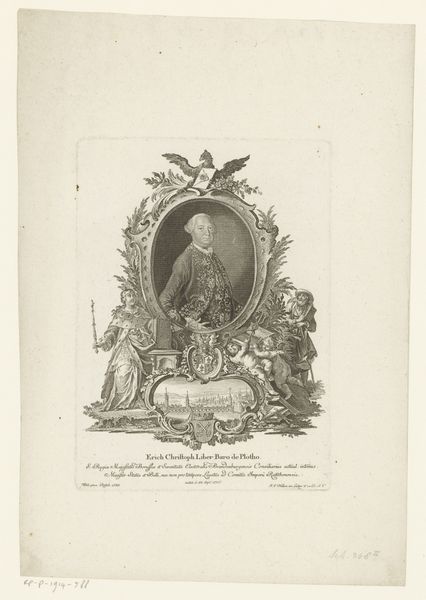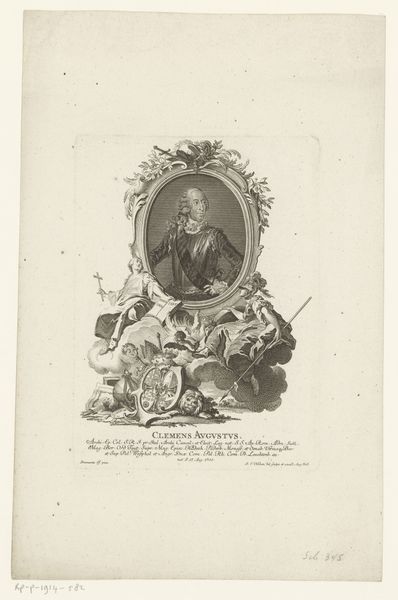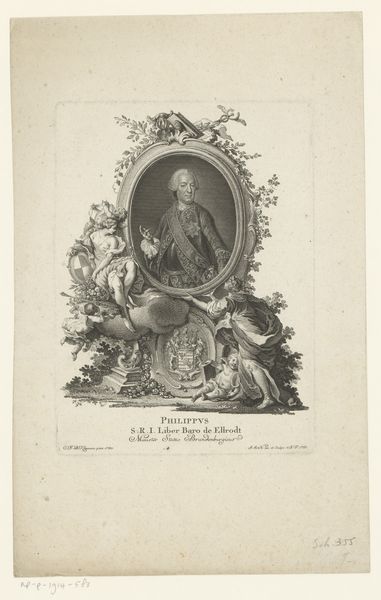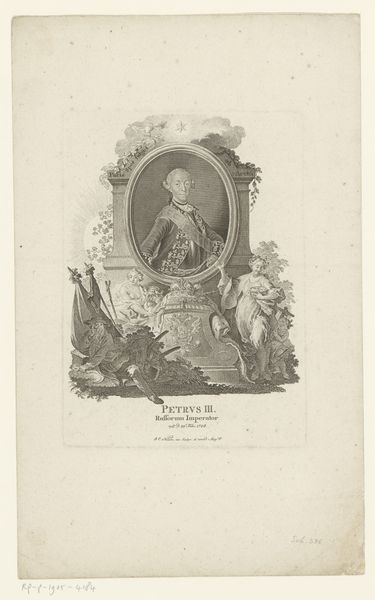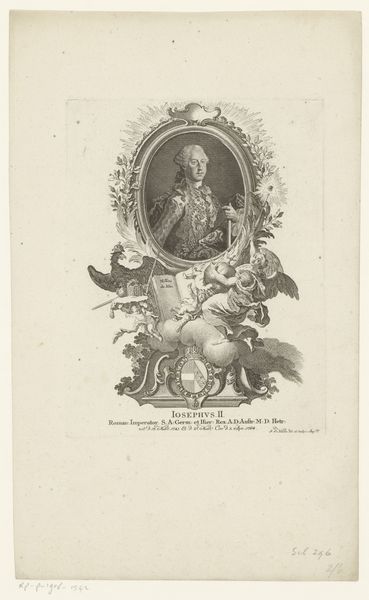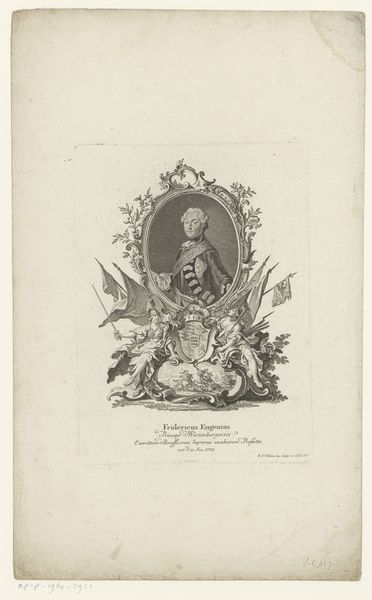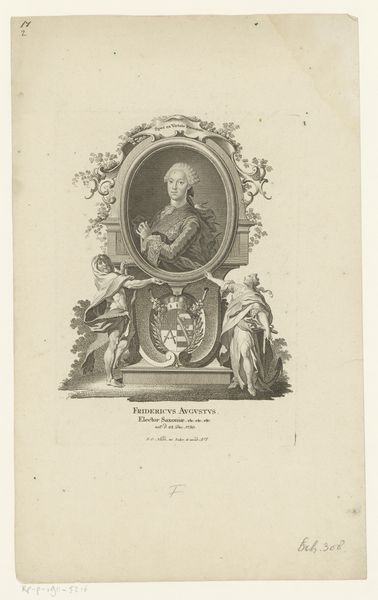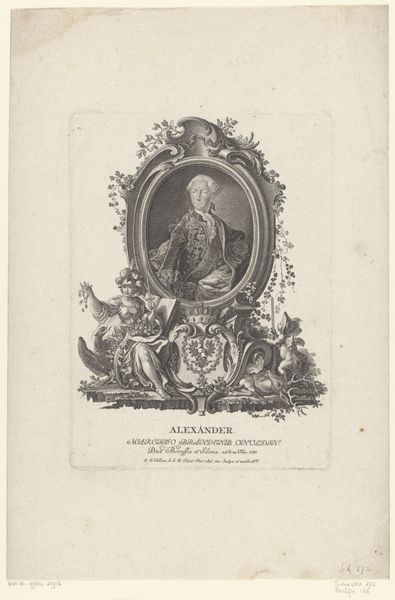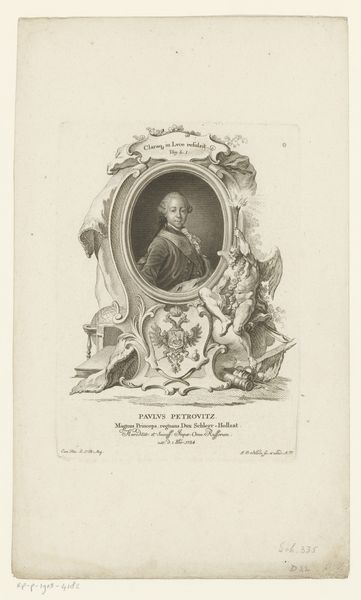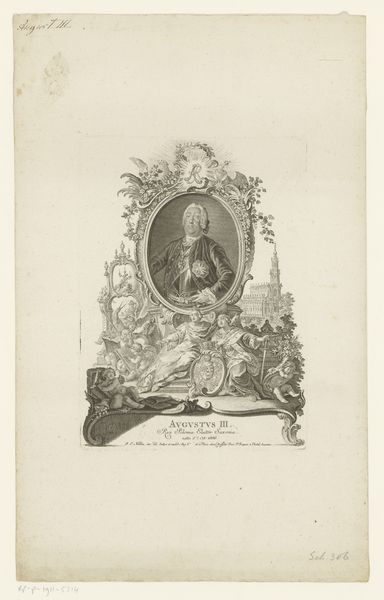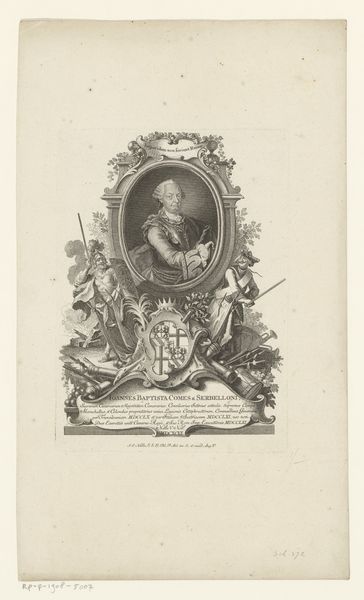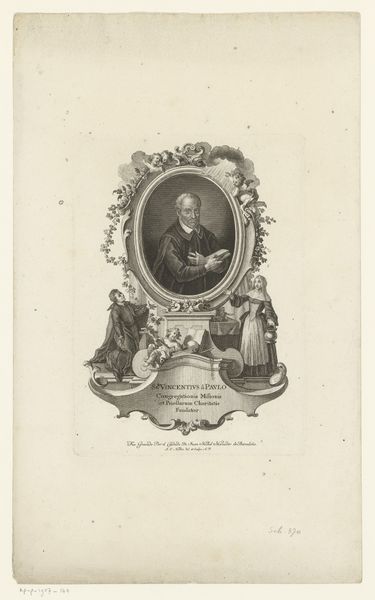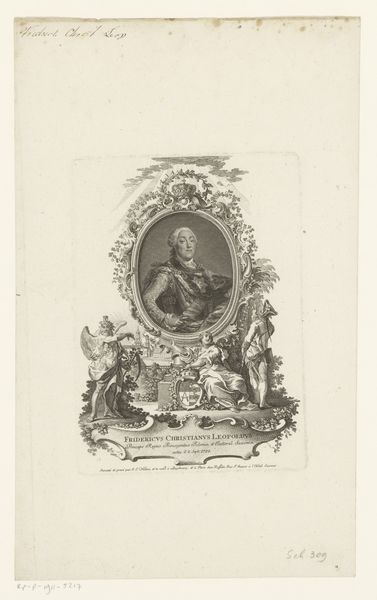
print, engraving
#
portrait
#
baroque
# print
#
old engraving style
#
figuration
#
line
#
cityscape
#
history-painting
#
academic-art
#
engraving
Dimensions: height 222 mm, width 162 mm
Copyright: Rijks Museum: Open Domain
This is Johann Esaias Nilson's etching of Franz Leopold von Nádasdy. It's a piece that invites us to consider the visual strategies through which power and identity were constructed in the 18th century. Nilson, working in the era of the Enlightenment, creates a portrait that is both personal and emblematic of Nádasdy's aristocratic status. The elaborate frame, the allegorical figures, and the Latin inscription, all work to amplify Nádasdy's identity as a man of importance. But who was he really? What were the lived realities behind the formal portrait? Consider the ways gender and class intersect in this image. Nádasdy is presented as a figure of authority and the female figure seated with a shield seems to pay homage to his authority. What does it mean to perform such an identity, and what are the social structures that support it? This portrait becomes more than just an image of one man. It is a lens through which we can examine the values, hierarchies, and representational practices of a bygone era.
Comments
No comments
Be the first to comment and join the conversation on the ultimate creative platform.
